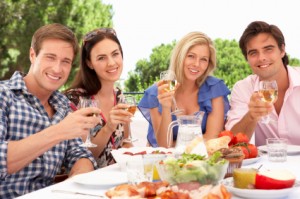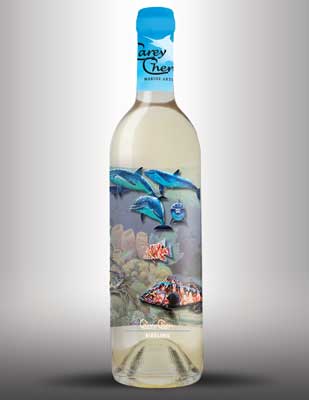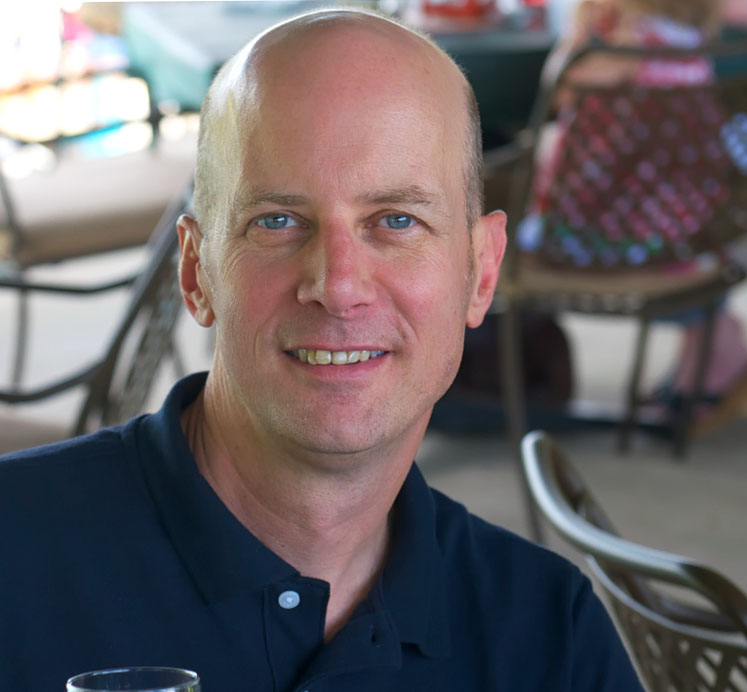Millennials Favoring Midwest Regional Wines
 The Millennial Generation — those roughly between the ages of 21 and 35 — has a strong interest in developing community ties. Supporting businesses near their homes makes them natural customers of local wines.
The Millennial Generation — those roughly between the ages of 21 and 35 — has a strong interest in developing community ties. Supporting businesses near their homes makes them natural customers of local wines.
‘You want to support your state’s economy, especially when your state’s economy is not doing that well,” explains Cynthia Drake, 32, of Mt. Pleasant, Michigan. That’s why she chooses Michigan wines over those from Spain, the Europe, South America, or even California. ‘I have made a conscious effort to drink Michigan wines and a lot of my friends feel the same way.”
In other words, they’re choosing bottles that are lesser known and moving towards cutting-edge. It’s much like listening to indie bands as opposed to nationally recognized Grammy winners. ‘Local wine is the hidden gem that does get overlooked by the national audience. You feel like you’re on the inside track,” explains Drake, who spent many weekends at local tasting rooms while working in Holland, Michigan, after college. It was a hayride at Fenn Valley Vineyards in Fennville that motivated her to study wine, a pursuit she supports by tasting as many Michigan wines as possible. She’s even begun to make her own wine and has set up a Google alert for Michigan wines. Trekking to Traverse City from Mount Pleasant twice a year bolsters her knowledge.
Jaclyn Stuart, 28, the sommelier at Margaux Bistro & Wine Bar in Sheboygan, Wisconsin, also likes to visit wineries within her region. Her favorite road-trip jaunt with friends is to Wisconsin wineries where they delight in sampling flights on premise. Many of the other winery visitors, she’s noticed, are between 25 and 40 years old. Restaurants too are of interest to Stuart. She said that Parallel 44, a Wisconsin winery, appears to be the most popular with restaurant wine lists, recognition that, of course, helps expand its reach.
For those new to drinking wine, the scene at a Midwest winery’s tasting room is definitely less intimidating than trekking out to Napa or Sonoma. ‘There’s no pretentiousness, and it’s so accessible to go in there and try what you like,” says Drake. ‘I have been tasting in California and it’s definitely different out there.”
It’s that kind of unpretentious atmosphere that Stuart hopes to promote when, come April, she opens Vintage Elkhart Lake, a wine shop and 16-seat bar in Elkhart Lake. ‘I will have a Wisconsin room with local products, including beer, cheese, spirits and wine. Local is very important to me,” says Stuart. ‘The eating-local thing has definitely affected me and my peers.”
For this younger crop of wine drinkers, meeting the winemaker and standing just a few feet from the vineyard, or knowing where the product came from, is what they’re after. ‘It’s more about the experience. We want to be able to say we went to the vineyards and we saw the grapes. It provides a richer experience, instead of ‘I went to Sam’s (Club) and bought this,'” says Megan Pressnall, 31, and director of communications for the Illinois Grape Growers and Vintners Association. ‘The local-foods movement is an easy sell. The next step is teaching the locavores to pour local wines with their foods.” To that end, this year her association will host four ‘Locavores Drink Local” events — the first was at Lincoln Land Community College in late January, open to food-industry professionals only, with culinary students preparing foods to match with wines from 15 Illinois wineries. Three additional events will be held in Carbondale, Chicago, and Peoria.
Becky Rochester, 31, grape marketing coordinator of Wisconsin Grape Growers Association, is pushing to put more Wisconsin wines in the spotlight, working with ‘Something Special from Wisconsin” (a trademarked program with Wisconsin’s state government) as well as locally produced Wisconsin Foodie, a television show about the state’s food and beverage products. Both appeal to a younger demographic. ‘We’re starting to see more restaurants featuring Wisconsin wine on the menu,” she says.
Targeting younger people is important. ‘We’ve started using Facebook to get the word out about events and articles in different media about the (Wisconsin) wines,” says Rochester. She also educates Wisconsin winery owners about the untapped potential within the Millennial Generation. ‘You can’t judge someone who comes into your winery, [who is] in their 40s or 50s, and think they’re going to be your best customer,” she says.
Wendy and Joe Staller are both 32 years old and like having younger visitors at their tasting room. In 2007, the Staller’s debuted their first vintage from Staller Estate Vineyard & Winery in Delevan, Wisconsin, working with contract growers in Viroqua. Now they also grow their own grapes on three acres. ‘We’re getting more Millennial Generation visitors. For a lot of them, they’re just getting into wine, and they’re on a mission to hit all the wineries in the state,” says Wendy Staller. ‘It’s those same people that are hitting all the farmers markets. They’re trying to stick local and support local, independent businesses as much as possible.”
This philosophy only deepens when you reside in a wine region with hundreds of wineries practically in your back yard. Erin Crowell, 27, moved back to Traverse City, Michigan, from Grand Rapids in 2008. She’s now the Features and Listings Editor at Northern Express. ‘It’s interesting — almost a trend in Traverse City. Most of the restaurants have local microbrews or wine. It’s a rarity to find someone who chooses a domestic brand over a local brand,” she says. Among her favorite state-bred wines is a late-harvest Riesling from Chateau Chantal on Old Mission Peninsula. ‘They produce a Riesling that’s won a ton of awards and is sweet, but not too sweet,” says Crowell.
While seasoned (read: older) wine drinkers might consult wine ratings in high-brow publications like Wine Spectator or Wine Enthusiast, or look to Robert Parker, this younger generation simply hops online to peruse blogs and web sites devoted to wine. An Internet brand like 35-year-old Gary Vaynerchuk — a supporter of local wines — is one example.





Interesting…. With the millennial market so receptive to blogging and social media marketing – as mentioned in the story – there’s a “growing” opportunity here for building a whole new way to build your winery’s brand strategy.